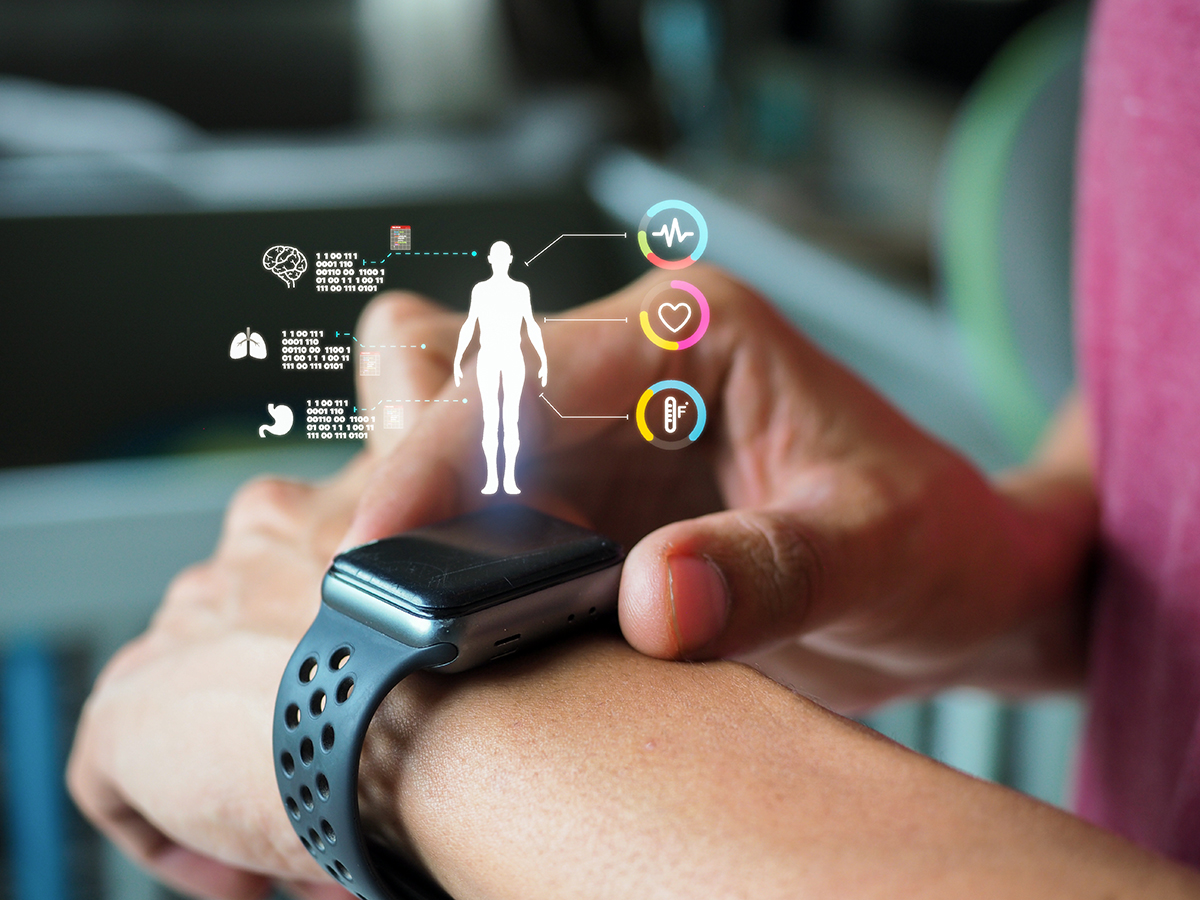
Why Digital Health Needs Employee Engagement to Succeed

Digital health’s potential has never been in doubt, but it is fair to say that nothing accelerated its increased adoption as much as the ongoing pandemic. And while the healthcare sector has always made the right noises when it came to integrating effective solutions, there is a consensus that it took a global health crisis to flag up why digital healthcare was the way forward.
If you want proof, then look at recent findings from the World Economic Forum (WEF). According to a WEF report, two-thirds of healthcare providers across 14 global markets are now investing heavily in digital health. Overnight, it appears to the untrained eye that virtual health solutions sprang up to enable social distancing and prevent the spread of COVID-19.
For those of us that have an ongoing interest in the wellness sector, digital health solutions are being rapidly adopted for the amazingly simple fact that they are designed to improve patient outcomes, patient satisfaction, operational efficiency and save money. That’s the good news.
The caveat to this medical utopia is that hype doesn’t always match reality. That is a pain point that needs to be addressed.
It is for that reason alone that we should take some time to think about not only the digital solutions that are being integrated but the people who will use them. In fact, it is often the end users who are the most accurate source of data for why a product or service becomes an indispensable part of a business optimization and time to market strategy.
User Experience = Patients AND Employees
When evaluating digital health tech, patient experience is – rightly – one of the main ways we measure success. From my personal experience, it is increasingly easy to book virtual appointments, get updates by text or resolve issues quickly.
However, as the health sector undergoes these fundamental changes, we are in danger of overlooking an essential user group, namely, the tens of millions of healthcare workers globally who are charged with deploying these technologies.
According to a recent report by Eagle Hill Consultancy, the average healthcare worker’s day-to-day interactions with technology leave them not only frustrated (63 percent) but also make their jobs harder to do (83 percent). If that experience is replicated across the healthcare sector as a whole, then we should sit up and pay close attention to what could be a digital disconnect.
The study goes on to suggest a link between the impact of tech (now a fundamental part of the overall toolset in healthcare) on decreased job satisfaction, productivity and – as focused research on EHR (Electronic Health Record) usability found – increasing nurse burnout.
We are all aware that the last 18 months have been anything but easy for healthcare workers, but I strongly believe that tech should make people’s lives easier, not more pressured. And if we make healthcare workers’ jobs revolve around technology, we are missing the true value of digital.
If we are to achieve true transformation, we need technology that supports people, not the other way around. That means we must take a 360-degree view of not only who is using the tech available but also the people that engage with it on a daily basis.
Tackling the Skills Challenge
The WEF report cites lack of technology training as one of the biggest barriers to unlocking the full value of digital health investments.
Frustratingly, it’s not an easy obstacle to resolve. Other barriers, like data security, governance and interoperability are being tackled through innovative partnerships between healthcare companies and technology or digital engineering companies.
But technology training is a little different.
For a start, healthcare companies must manage four generations of workers (Boomers, Gen X, Millennials and Gen Y), all of whom typically have a range of differing attitudes and skills when it comes to tech. And while tech has reportedly widened the skills gap between the generations, the younger ones are deemed to be the most tech-savvy.
The flip side to this argument is that healthcare relies on the knowledge and experience of the older workers. In addition, the last thing the healthcare industry needs is to alienate these groups, so any digital health solution being implemented also requires a comprehensive training plan to ensure the workforce gets the most value from whatever that solution has been brought in to fix.
How Poor Design Impacts the Patient-Provider Relationship
When virtual care and other digital health solutions work well, they enhance the patient-provider dynamic, improving patient outcomes as well as the process that leads to those outcomes. For the record, I can share many examples of virtual technologies transforming care, whether because of reducing the admin burden on employees and patients, through faster access to information thanks to virtual chat bots and other digital assistants, faster diagnostics, or by enabling more tailored therapies.
However, we need to acknowledge that while digital health technologies have undoubtedly done a great deal of good and are able to reach underserved communities as never before, if health technology is hard to use, it puts increased pressure on healthcare workers.
Without wishing to sound like a broken record, this is a group of people that – the last 18 months aside – deals with its fair share of recurring stress. As worker dissatisfaction grows, decreased productivity and burnout become real concerns for healthcare companies.
Moreover, when health technology does not meet the expectations of its users, employees end up relying on workarounds of their own creation. These, while providing quick resolutions in the short term, can harbor bigger problems longer term. Again, it is in all our interests that employee engagement is taken seriously in digital health.
Putting People at the Heart of Processes
So, how can healthcare innovators ensure that their solutions are supporting the people and the processes they need to carry out to do their job, rather than adding to the problem?
At Apexon, our starting point has always been that all digital touchpoints are a potential competitive advantage. In healthcare specifically, the most successful digital transformations I have overseen have had the following three guiding principles in common.
1. Plan around user experience from the start
One of the largest healthcare providers and insurers in the United States (also a longstanding Apexon customer), embarked on its digital transformation journey to improve care accessibility and effectiveness for its 10 million+ members.
The company identified several different areas where it wanted to make improvements, initially focusing on members, doctors and other staff, with the idea being to make certain its technology could have the greatest impact. This process put users right are the heart of its digital strategy and the organization has reaped the benefits as a result.
Employee satisfaction with the new system is consistently high, which has led to easier information access. This feedback loop has then resulted in better patient care, operational improvements, lower costs, and ground-breaking new treatments that can be easily monitored and managed.
2. Aim high with creative, strategic thinking
Navigating Cancer, the most broadly deployed oncology patient management platform in the U.S., were focused on becoming the first truly patient-centered platform for oncology.
With that as its North Star, the organization understood that enabling collaboration between stakeholders was the key to achieving this bold vision. By helping providers engage patients more effectively through its digital health platform, Navigating Cancer’s solutions can improve treatment adherence, reduce care costs, encourage healthier behavior and produce better patient outcomes.
3. Back employees with top-down commitment
When the passion – and ongoing commitment – to digitally transform comes right from the top of an organization, the likelihood of success is greater. A rule of thumb is that digital transformation is just as much about changing people’s perceptions as it about technology, and nowhere is this truer than in digital health.
On a basic level, employees need to know and understand the “why” of what they are doing. In our experience, that is often a platform for innovation.
Getting inputs from employees right at the start of the process is a good first step, as it means they can shape the design of the product. Smaller-scale rollouts can provide valuable insights into how implementations may need to be tweaked ahead of a large-scale deployment. And, as previously mentioned, appropriately targeted training is essential to encouraging employee engagement, as is the ability to give and receive feedback on an ongoing basis.
Relationship between Health Workers and Tech is Key
User experience has always been a major factor in digital design, but what makes it a particularly pertinent issue in healthcare is the recent rate of digital adoption. In short, this sector is changing … and fast.
Healthcare companies now find themselves at a crossroads. The sector has undoubtedly come a long way in the last 18 months, proving that neither productivity nor patient experience need to suffer in a virtual environment. The question is, what direction will they take next?
There’s little doubt that the future of healthcare will likely resemble a collaboration between human workers and AI, with these technologies assisting decision-making and easing the administrative burden – IDC (International Data Corporation) predicts, for example, that over two-thirds of medical imaging will involve AI by 2026.
In the not-so-distant future, how well employees interact with digital solutions will become a key predictor of competitive differentiation. Put simply, the more effectively healthcare workers can deploy a technology, the better the outcomes for patients, providers and payers. Digital healthcare has been a long time coming, but it will always need all end users to be fully engaged.
Click here to learn more about Apexon’s digital health expertise. Alternatively, you can find out how Apexon can help you advance your toughest digital health challenges by using the form below.




